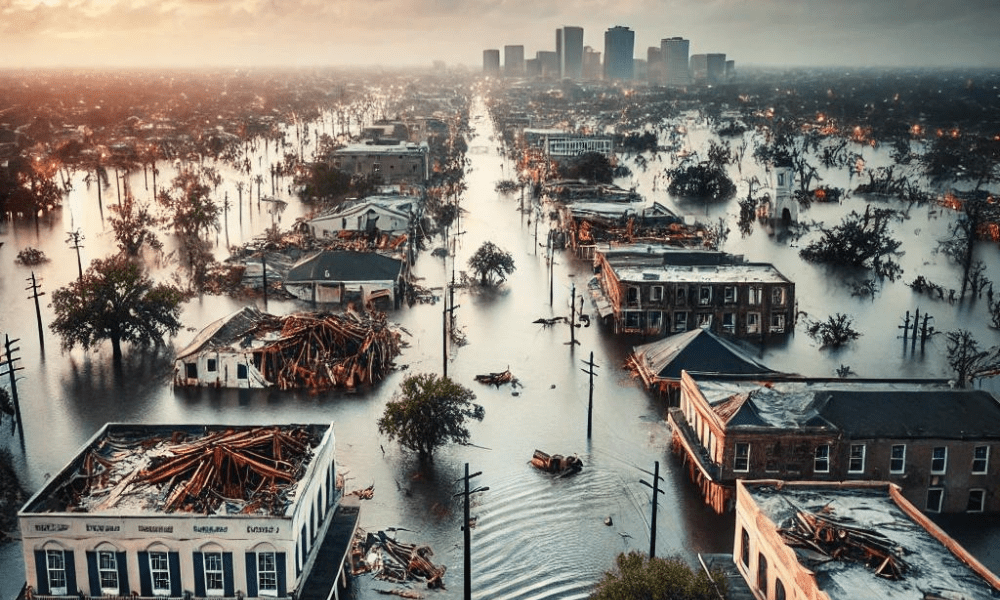Louisiana insurers brace for losses from Hurricane Francine’s destruction

Louisiana insurers brace for losses from Hurricane Francine’s destruction | Insurance Business America
Catastrophe & Flood
Louisiana insurers brace for losses from Hurricane Francine’s destruction
Regional carriers face higher risk from concentrated exposure
Catastrophe & Flood
By
Kenneth Araullo
Hurricane Francine made landfall on Sept. 11 along the Louisiana coastline in Terrebonne Parish as a Category 2 storm, bringing winds of up to 100 miles per hour. The storm affected parts of Louisiana, Mississippi, and neighboring states with damaging winds, storm surges, and flash flooding from heavy rainfall.
As the sixth named storm and fourth hurricane of the 2024 Atlantic hurricane season, Hurricane Francine’s full impact on property and casualty (P&C) insurers remains uncertain. According to insights from Moody’s Ratings, it will take time to assess the magnitude of insured losses, but regionally focused insurers are expected to bear the brunt of the storm.
In recent years, US primary insurers have retained a higher proportion of catastrophe risk, particularly for lower return periods, as reinsurers have raised prices and attachment points while reducing aggregate coverage.
Moody’s notes that most losses from Hurricane Francine are expected to be absorbed by primary insurers. Large national carriers such as State Farm, Allstate, and United Services Automobile Association (USAA) are well-positioned to manage the financial impact, owing to their geographic diversification, strong reinsurance protection, and solid capital bases.
However, regional insurers are likely to be more affected due to their geographic concentration in the storm-hit areas.
Beyond property losses, business interruption claims may be significant, particularly if critical infrastructure is disrupted or if long-term power outages or access issues occur. According to Moody’s, commercial insurance policies typically cover these types of claims, which could add to the overall cost for insurers.
A significant share of the losses along the Louisiana coast is expected to be absorbed by Louisiana Citizens Property Insurance Corporation (LA Citizens), the state’s insurer of last resort. Sponsored by the State of Louisiana, LA Citizens covers residents and businesses unable to obtain coverage in the voluntary market.
Moody’s highlights that LA Citizens’ risk exposure is concentrated in high-risk, hurricane-prone areas, particularly in major cities. However, like most private homeowners’ policies, LA Citizens does not cover flood damage.
LA Citizens currently has more than $1.8 billion in reinsurance and catastrophe bonds to cover storm losses, alongside reserves to manage a $477 million retention for the first and second storm. In addition, the insurer has a $125 million line of credit for liquidity. These resources are considered sufficient to cover losses from a 1-in-100-year storm, according to Moody’s.
LA Citizens also has the authority to impose assessments on insurers and policyholders in Louisiana to help cover deficits. Based on current premiums, the insurer could collect a regular assessment of about $445 million within 30 days and an emergency assessment of the same amount if necessary.
Moody’s also notes that, in addition to homeowners and commercial property exposures, P&C insurers may face claims on private and commercial vehicles, watercraft, and other assets affected by the storm. With more than 10 weeks remaining in the 2024 hurricane season,
Moody’s warns that while the season has been less active than initially projected due to the absence of La Niña conditions, there is still time for the number of named storms to reach or exceed the long-term average of 14 storms.
As insurers and analysts monitor the aftermath of Hurricane Francine, Moody’s suggests that the situation will provide further insight into the resilience of both national and regional insurers in the face of increasing hurricane activity.
What are your thoughts on this story? Please feel free to share your comments below.
Related Stories
Keep up with the latest news and events
Join our mailing list, it’s free!






